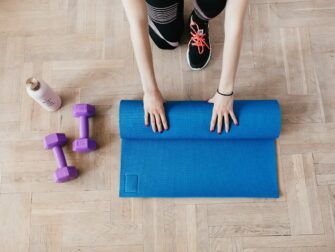Fitness Foundations: Building a Strong and Active Life
In a world where health is paramount and wellness is a top priority, fitness stands as a cornerstone. Whether you’re aiming to run a marathon, sculpt a beach-ready body, or simply improve your overall health, establishing solid fitness foundations is essential. These foundations serve as the bedrock upon which you can build a strong, vibrant, and active life. In this article, we delve into the key components of fitness foundations and explore how they contribute to a healthier and more fulfilling lifestyle.
1. Understanding Fitness Foundations
Before embarking on any fitness journey, it’s crucial to understand what fitness foundations entail. Essentially, fitness foundations encompass a range of elements that form the basis of a well-rounded and sustainable fitness regimen. These elements include:
- Physical Activity: Regular exercise is a cornerstone of fitness. It encompasses activities that get your body moving and your heart pumping, such as walking, running, swimming, cycling, and strength training.
- Nutrition: Proper nutrition provides the fuel your body needs to perform optimally. This includes consuming a balanced diet rich in fruits, vegetables, lean proteins, whole grains, and healthy fats, while minimizing processed foods, sugar, and unhealthy fats.
- Rest and Recovery: Adequate rest and recovery are vital for allowing your body to repair and recharge after exercise. This includes getting enough sleep, incorporating rest days into your workout routine, and managing stress effectively.
- Flexibility and Mobility: Flexibility and mobility exercises help improve range of motion, reduce the risk of injury, and enhance overall movement quality. Activities like yoga, stretching, and mobility drills are beneficial for maintaining flexibility and mobility.
2. Establishing a Solid Exercise Routine
One of the first steps in building fitness foundations is establishing a solid exercise routine. This involves:
- Setting Goals: Determine what you want to achieve with your fitness regimen, whether it’s weight loss, muscle gain, improved endurance, or enhanced overall health.
- Choosing Activities You Enjoy: Find physical activities that you genuinely enjoy, as you’re more likely to stick with them long term. Experiment with different activities until you find what works best for you.
- Gradually Increasing Intensity: Start with manageable levels of intensity and gradually increase as your fitness improves. This helps prevent burnout and reduces the risk of injury.
- Incorporating Variety: Mix up your workouts to prevent boredom and target different muscle groups. Include a combination of cardiovascular exercise, strength training, and flexibility work.
3. Prioritizing Nutrition
Nutrition plays a fundamental role in supporting your fitness goals and overall health. To establish solid nutrition foundations:
- Focus on Whole Foods: Base your diet around whole, nutrient-dense foods such as fruits, vegetables, lean proteins, whole grains, and healthy fats.
- Stay Hydrated: Drink plenty of water throughout the day to stay hydrated and support optimal bodily functions.
- Balance Macronutrients: Aim for a balanced intake of carbohydrates, proteins, and fats, tailored to your individual needs and activity levels.
- Practice Portion Control: Be mindful of portion sizes to avoid overeating, and listen to your body’s hunger and fullness cues.
4. Embracing Rest and Recovery
Rest and recovery are often overlooked but are crucial components of any fitness regimen. To prioritize rest and recovery:
- Get Adequate Sleep: Aim for 7-9 hours of quality sleep each night to support recovery, cognitive function, and overall well-being.
- Incorporate Active Recovery: Engage in light activities such as walking, yoga, or gentle stretching on rest days to promote blood flow and aid in recovery.
- Manage Stress: Practice stress-reducing techniques such as meditation, deep breathing exercises, or spending time in nature to mitigate the negative effects of stress on your body.
- Listen to Your Body: Pay attention to signs of overtraining, such as persistent fatigue, decreased performance, and increased susceptibility to illness. Adjust your workout intensity or take extra rest days as needed.
5. Cultivating Flexibility and Mobility
Flexibility and mobility are essential for maintaining functional movement patterns and preventing injury. To improve flexibility and mobility:
- Incorporate Dynamic Warm-ups: Start each workout with dynamic warm-up exercises to prepare your muscles and joints for movement.
- Practice Static Stretching: Perform static stretches after workouts to lengthen muscles and improve flexibility.
- Include Mobility Exercises: Incorporate mobility exercises that target specific joints and movement patterns to enhance range of motion and joint stability.
- Try Yoga or Pilates: Participate in yoga or Pilates classes to improve flexibility, mobility, and body awareness.
6. Staying Consistent and Adaptable
Consistency is key when it comes to building and maintaining fitness foundations. However, it’s also essential to remain adaptable and make adjustments as needed. Here’s how:
- Stick to Your Plan: Commit to your fitness routine by scheduling workouts and treating them as non-negotiable appointments.
- Be Flexible: Life can be unpredictable, so be prepared to adjust your workout schedule or routine when necessary. Remember that some exercise is better than none, so do what you can with the time and resources available.
- Monitor Progress: Keep track of your progress by logging workouts, measurements, and how you feel both physically and mentally. Celebrate achievements and use setbacks as learning opportunities.
- Seek Support: Surround yourself with a supportive community of friends, family, or workout buddies who can encourage and motivate you along the way.
Conclusion
Building fitness foundations is essential for creating a strong, vibrant, and active life. By understanding the key components of fitness, establishing a solid exercise routine, prioritizing nutrition, embracing rest and recovery, cultivating flexibility and mobility, and staying consistent and adaptable, you can lay the groundwork for a healthier and more fulfilling lifestyle. Remember that fitness is a journey, not a destination, so enjoy the process and celebrate every step along the way.



